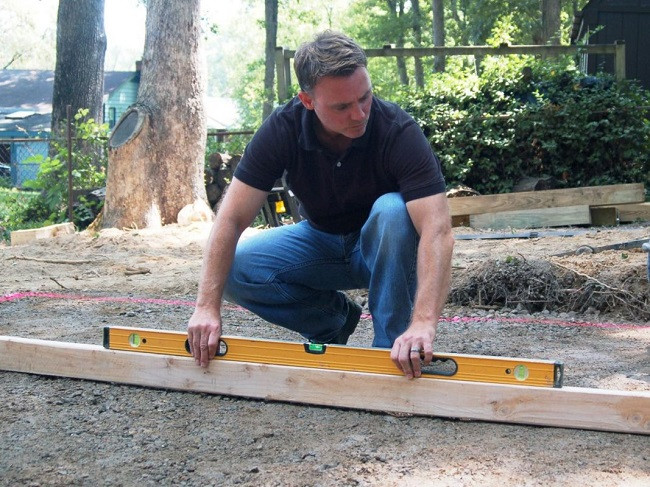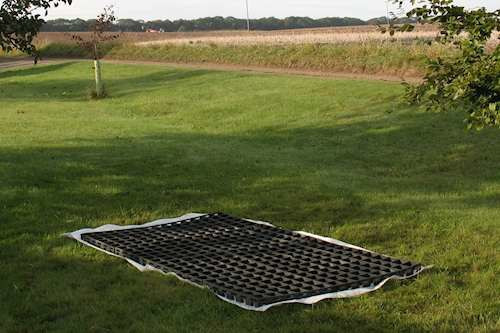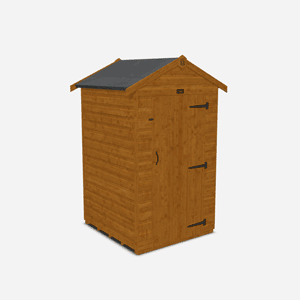How to Install a Plastic Shed Base Kit
Published: 20/09/2021

As you’re reading this, its safe to assume you want to know how to install a plastic shed base kit. Perhaps you want to know how easy it really is before buying, or maybe you’ve just bought one and you need a reliable step-by-step guide to setting it up. Thankfully, of all the shed base ideas you may have seen, laying a plastic base is an easy job – and much easier than building a concrete shed base, for example. Here’s how to install a plastic shed base…
1. Make sure you have everything you need
In this piece, we’re referring to plastic grid shed bases, which are so called because they are made with interconnecting grids. There are a few brands making products that fit this description, including the Ecobase Fastfit and ProBase plastic shed base. We recommend the Ecobase Fastfit – it uses shed base plastic that's 100% recycled from UK sources, so it lives up to its eco-friendly name. It’s also super-easy and quick to install! The compact version of this heavy-duty plastic shed base will suffice for most sheds as it comes in ten size variations, ranging from 4x2 to 9x6. However, Standard and Large variants are also available.
Plastic shed base checklist

Before you start laying your shed base kit, here’s what you need:
- Plastic grid system (enclosed)
- Permeable weed membrane (enclosed)
- Pea gravel
- A garden shed
- Tape measure
- Pegs and string
- Spirit level or set square
Your plastic shed base kit should include both the grid system and permeable listed above – check you have them before moving on to the next step. If they aren’t included in the box you receive, we recommend contacting your retailer.
2. Prepare the ground

This third stage involves preparing the ground – which (like pretty much every stage of the process) is much easier than more traditional methods, such as using concrete slabs or even timber bearers.
How do you prepare ground for a plastic shed base?
Choose an area that’s suitable for your shed base: While you can lay it on grass, you should make sure the ground beneath the base is strong enough to carry the weight of both the base and the shed. With this in mind, avoid boggy areas and find an area that’s as level as possible (use your set square or spirit level for this). Measure out the area: Using your tape measure, pegs and string, make sure the ground beneath the base is strong enough to carry the weight of both the base and the shed. Avoid boggy areas and find an area that’s as level as possible (use your set square or spirit level for this). If your lawn is completely sloped, you need to dig out a section of the lawn to create a level ground. To find out how to do this, read our guide on building a shed base on uneven ground. Use the set square square/spirit level to make sure the ground is level before using the pegs and string to mark out the area. Make sure the area is slightly bigger than the base itself to allow for a margin of error.
3. Lay the weed membrane

To increase the life of your shed, it’s important to lay a weed membrane under the base. As you may guessed from its name, this permeable membrane stops weeds growing under and around your shed.
4. Lay down the shed base kit

In this step, all you need to do is connect the grids together to create a base large enough for your shed. In the case of the Ecobase Fastfit, each grid features clips and grooves which making light work of connecting the grids together. Each grid has a footprint of 500mm x 500mm (approx. 19.7 inches x 19.7 inches). As a result, you’ll need at least five grids for an 8’x6’ shed (for example).
Can you cut a plastic shed base?
While the interlocking grids make it easy to shorten or extend your plastic shed base to suit your needs, the use of plastic also means you can cut the grids to size with a handsaw, if necessary.
5. Fill the spaces in the grids with pea gravel

Filling the empty spaces between the plastic in each grid make the base more solid and ensures the base can easily carry the weight of the shed. The pea gravel also helps keep the area from moisture, which aids drainage.
How much gravel do you need for your plastic shed base?
If you have a larger shed, use pea gravel throughout the base. This provides create a more solid foundation that is better able to carry the weight of the shed (or any garden building) and helps with drainage. However, you don’t need to do this if you have a small garden building. That said, we recommend filling up the perimeter of the base – using enough gravel to fill the outer sections. There are two main reasons for this... First, empty gaps can look untidy – so it’s better to fill them if you want you shed to look nice. And second (and most importantly), pea gravel helps prevent moisture from collecting and protects the shed from rot.
6. Build your shed on top of the plastic base
All that’s left to do now is build your shed on top of the base. If you need help doing that, take a look at our guide to assembling a shed. As you can probably tell, it’s so much easier and faster to install a plastic shed base than it is to lay more permanent structures.
How to secure a shed to the plastic shed base
In the UK, it isn’t necessary to secure your shed to the base – including plastic bases. This is because, unlike the other countries faced with frequent hurricanes etc, the relative lack of extreme weather in the UK ensures the weight of the building is enough to keep it in place.








